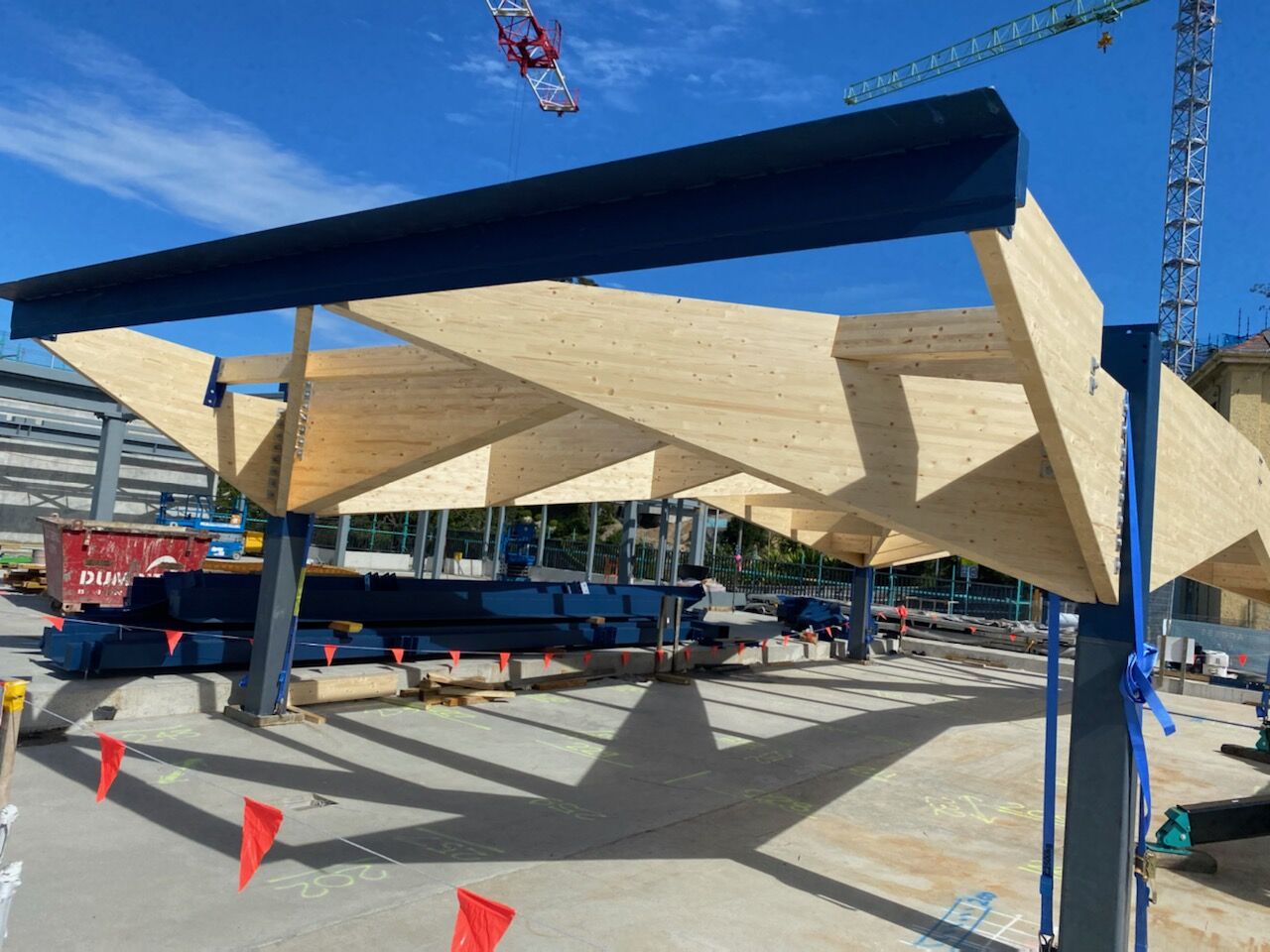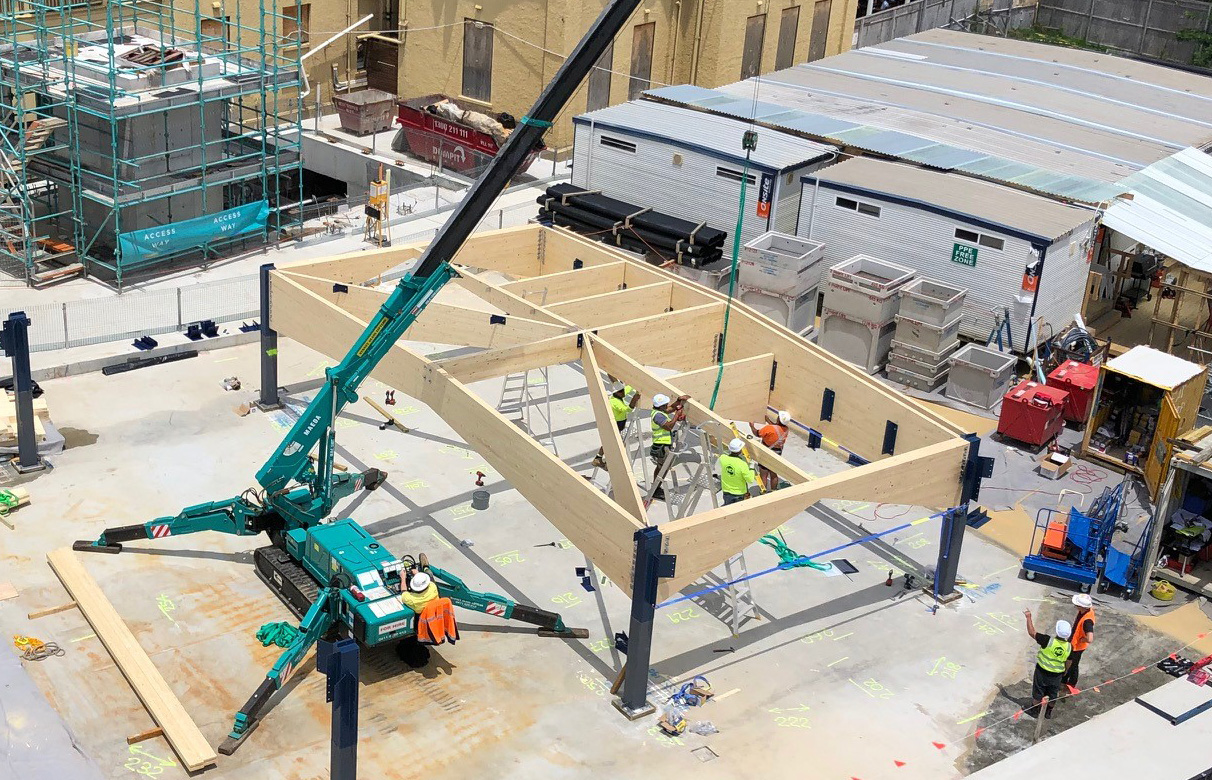The installation of the prefabricated Glulam and Cross-Laminated Timber roof structure on the future Chapel marks an exciting milestone in the Cranbrook School redevelopment project delivery.
After managing the procurement process RCC was excited to partner with our project partners throughout the off-site prefabrication of the Glulam, to then have the product arrive on site this month for assembly and installation.
For this project, we used CLT sheeting on top to provide lateral stability to the overall structure. The unique style of the Cranbrook School Chapel was designed by architecture firm, Architectus. Using real timber, the feature was structurally designed by engineering firm, SCP Consulting, with authentic materials procured from Austria by supplier, Viridi, and delivered by ship via Singapore.
PROJECT DETAILS
Due to the scarcity of timber in the market, as well as the intricate design of the Chapel, extreme care was taken to ensure that the timber arrived safely.
Our project team employed digital design coordination to manage the design and construction planning process. Using Building Information Modelling (BIM) they produced a detailed digital model of the timber structure to plan and confirm each step of the on-site assembly process. This approach facilitated confident on-site construction and a seamless process when lifting the structure into place with the crane to set into the steel.
With safety as our number one priority, RCC assembled the Glulam on temporary hardstand above slab height prior to lifting it into its final position. This enabled works to be completed from the ground using ladders rather than working at heights.
This measured approach to ensure the safety of workers on site, also protected the rare Norwegian pine itself and streamlined the overall works to maintain the project programme and quality.
QUICK FACTS:
- The glulam timber was designed and modelled in Australia and fabricated in Austria by Viridi.
- The timber species is Norwegian pine.
- Viridi has installed the glulam as a kit of parts on site. The kit includes pre-assembled pieces into three cassettes on temporary hardstand, which are then lifted into their final position on structural steel spigots.
- The glulam has been assembled off the Chapel roof, then craned and set into the Chapel steel.
- The total ceiling span is 24.6m x 16.6m.
- Total of 105 glulam members to assemble four roof types and three cassettes.
- Total weight of glulam is 12.35 tonnes per cassette.
- The total weight of the timber structure including the steel structure is 34 tonnes.

WHAT IS GLULAM TIMBER AND WHY WAS IT USED?
Glulam, short for glued laminated timber, is an engineered wood product. Originating in Germany around 1900 and making its way to Australia in the 1950s, it is used for both structural and decorative applications.
A glulam member is made with multiple layers of solid wood lumber bonded together with high-strength adhesive to form a single structural unit. Glulam timber is a versatile and innovative construction material, used widely in commercial as well as residential projects.
Key applications include:
- Straight beams, including lintels, purlins, ridge beams, and floor beams
- Columns, including round, square, and complex sections
- Tied rafters
- Trusses
- Tied arches
- Arched bridge supports
- Curved beams
Often referred to as the ‘new steel’, glulam timber is renowned for its incredible strength, durability, and sleek aesthetics. It also leaves a small carbon footprint, as the raw material is renewable and can be reused or recycled. Given its reliability and flexibility to be used across an array of applications, glulam timber is in high demand globally and is considered a scarce commodity in the market.
